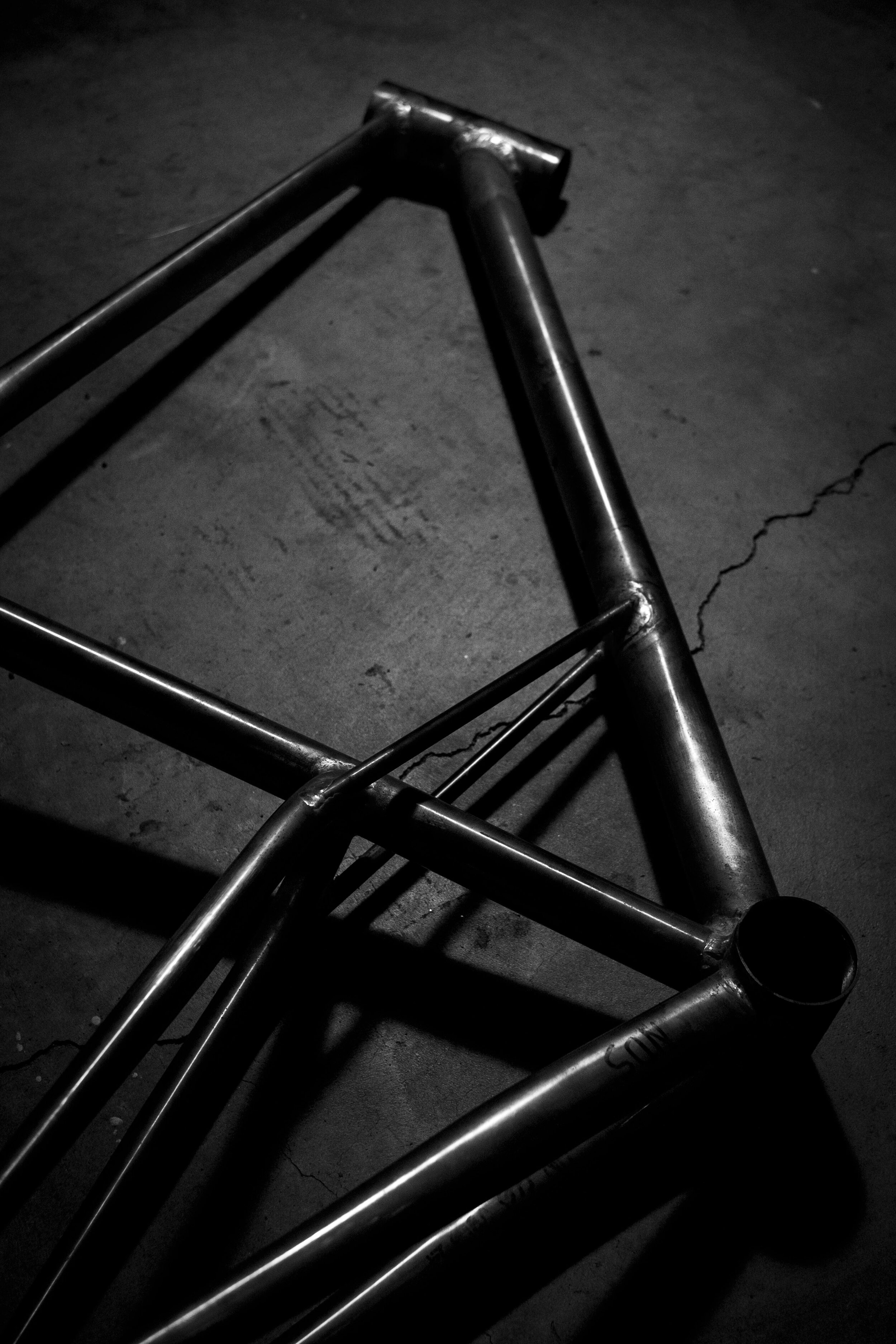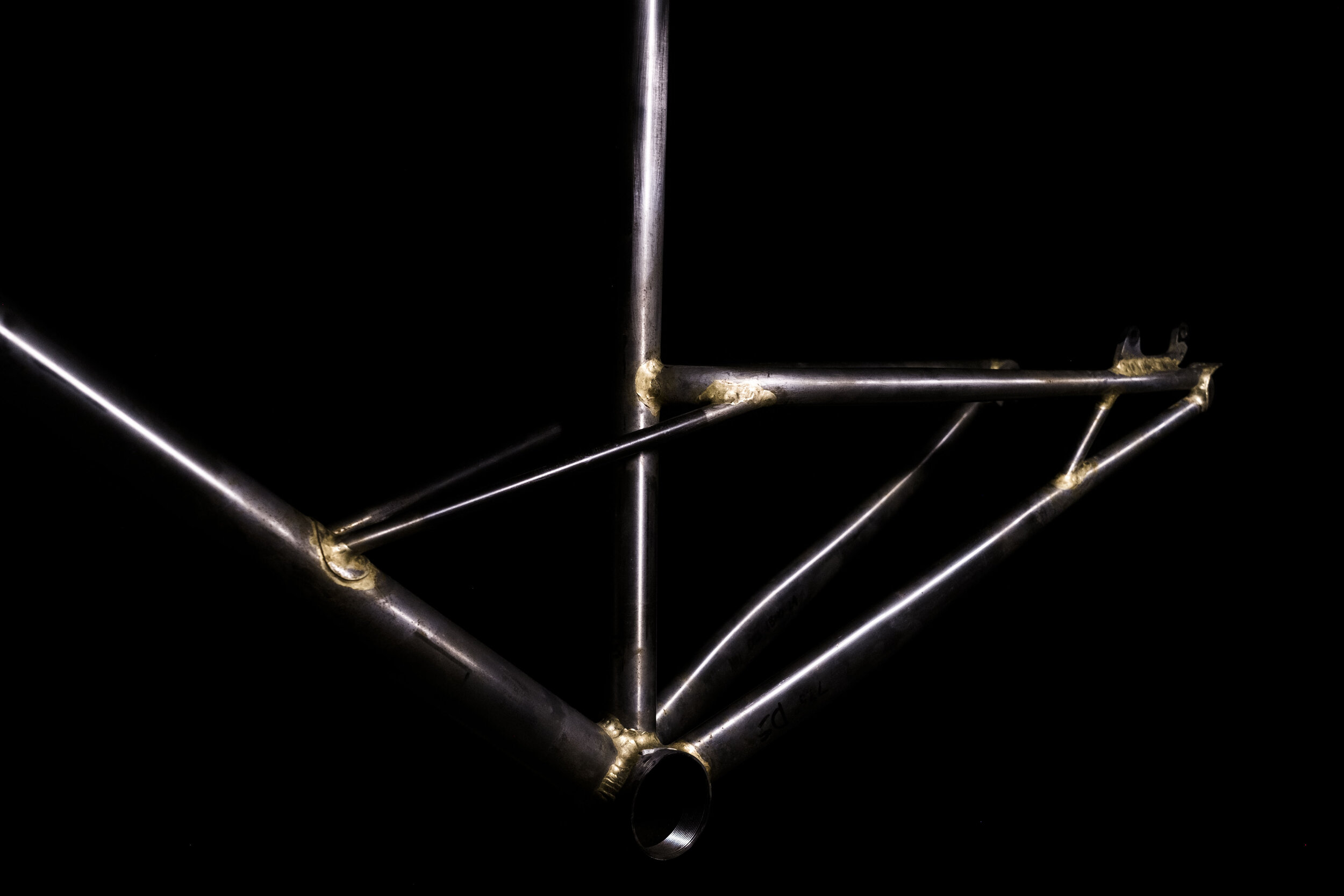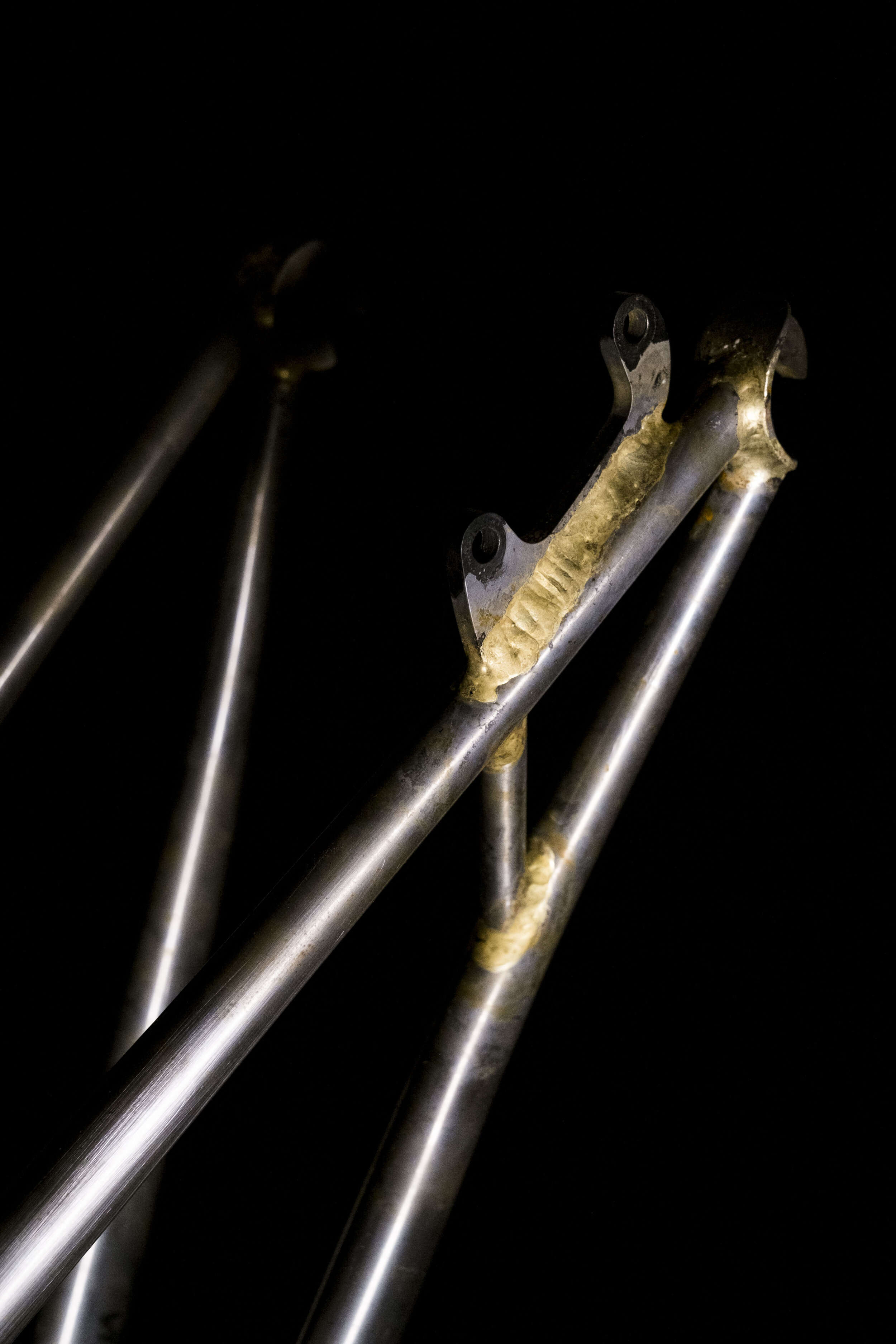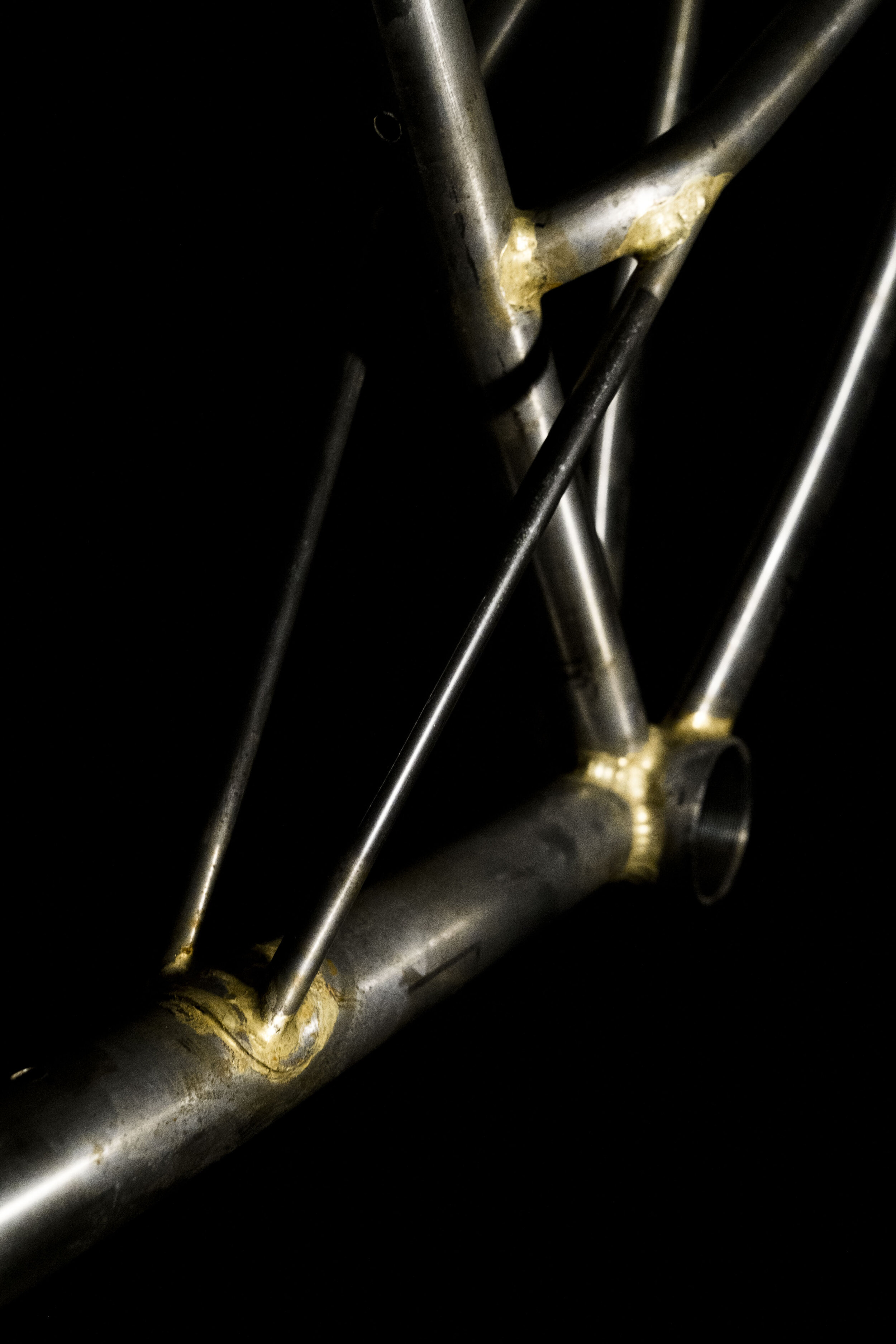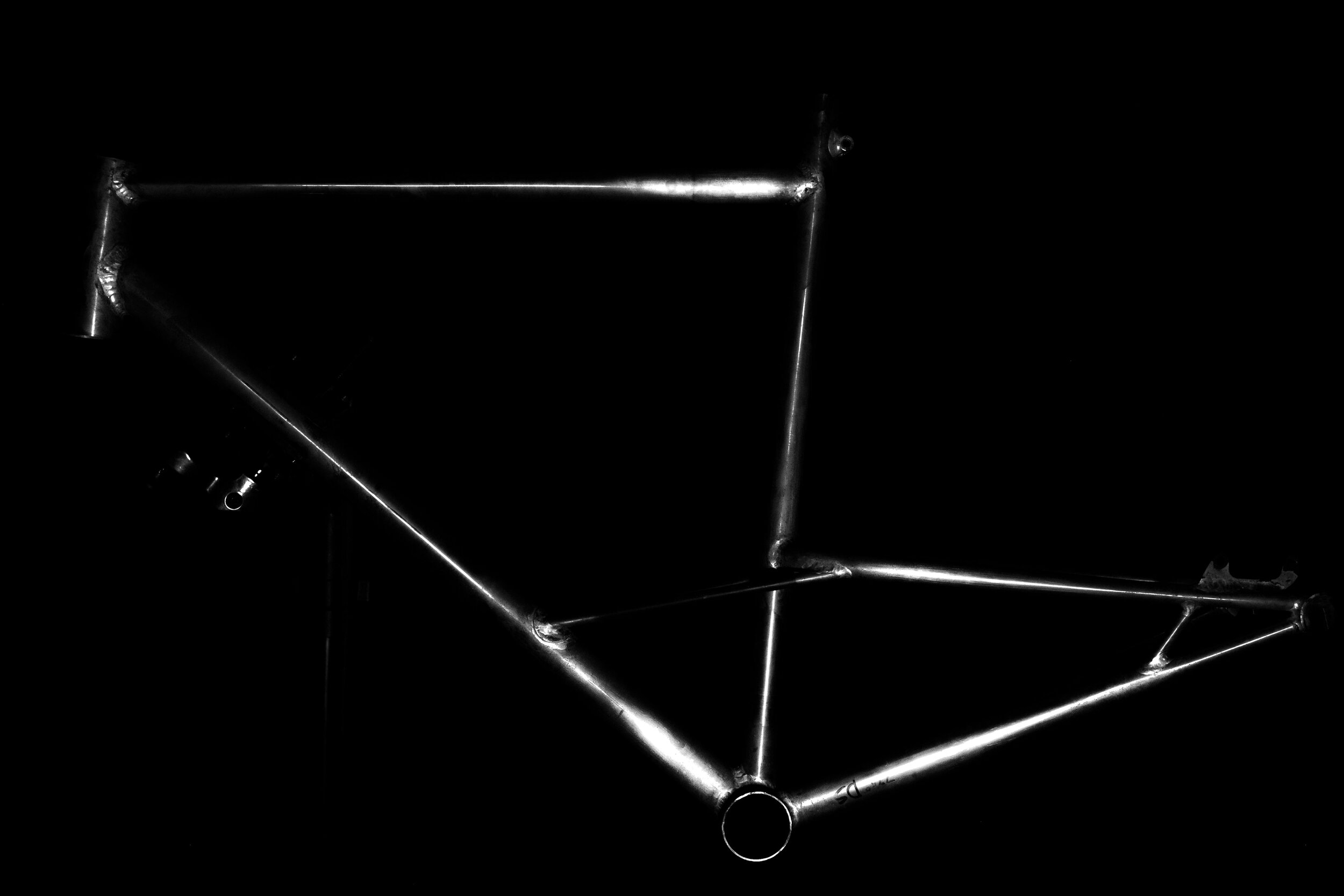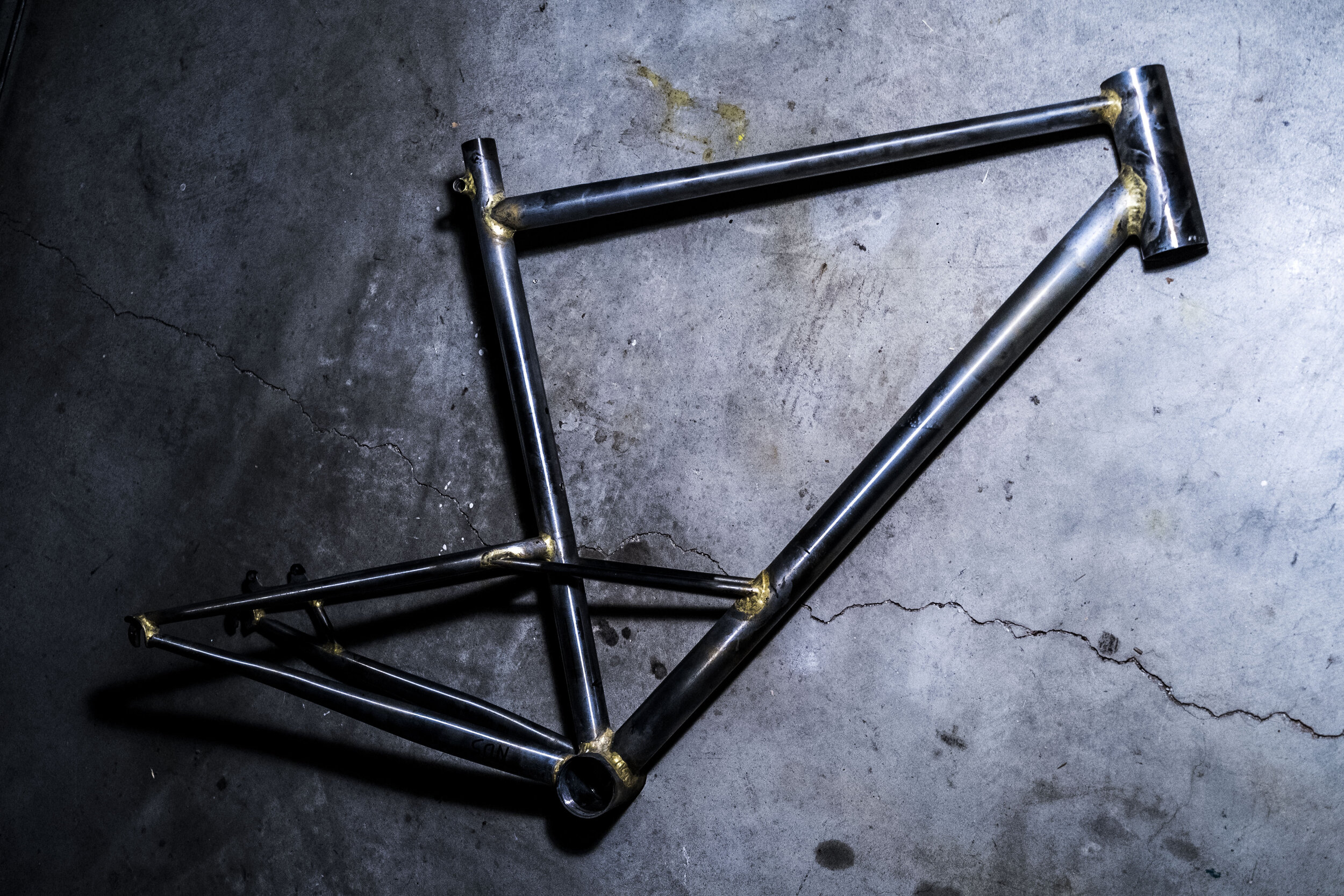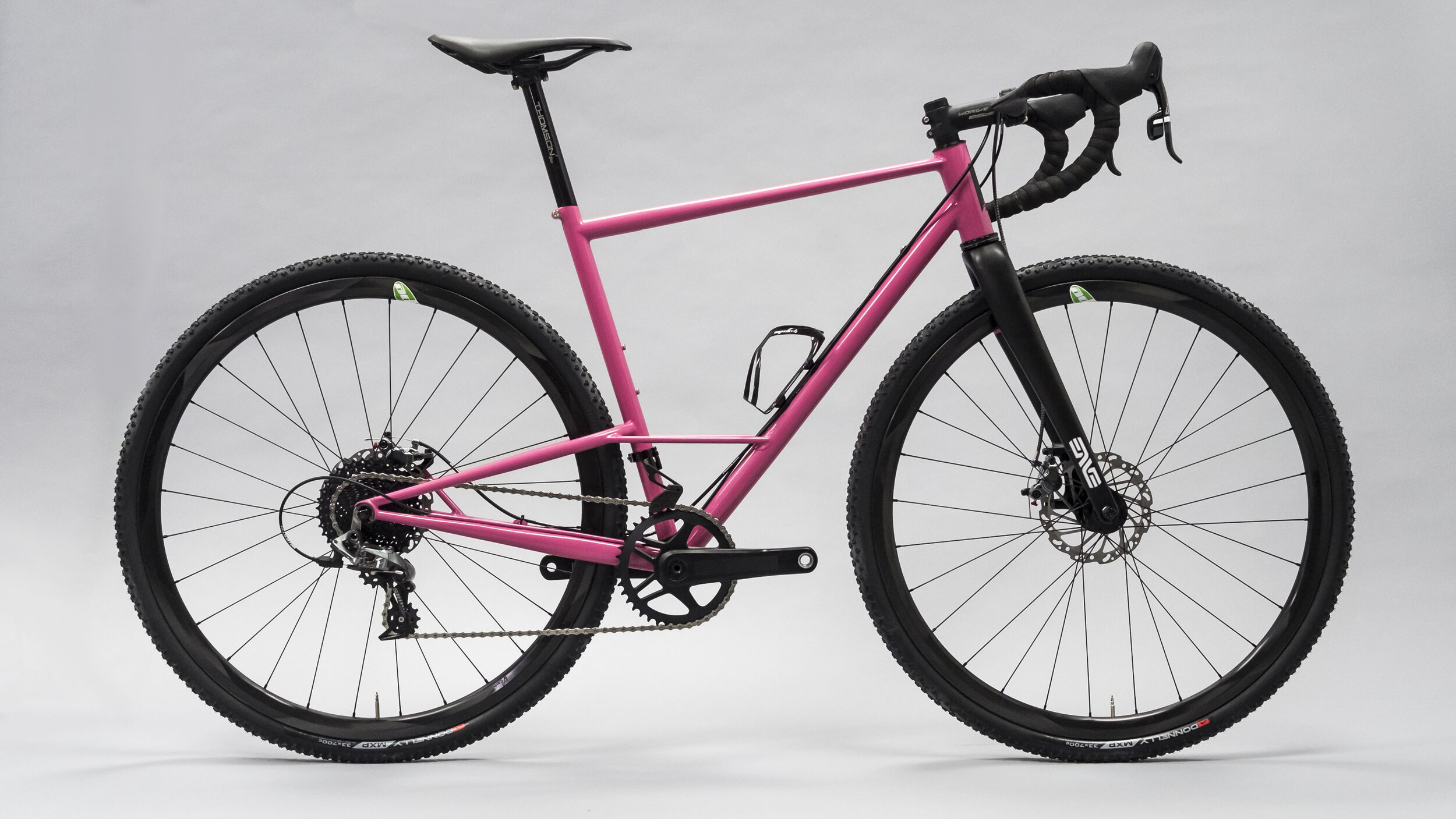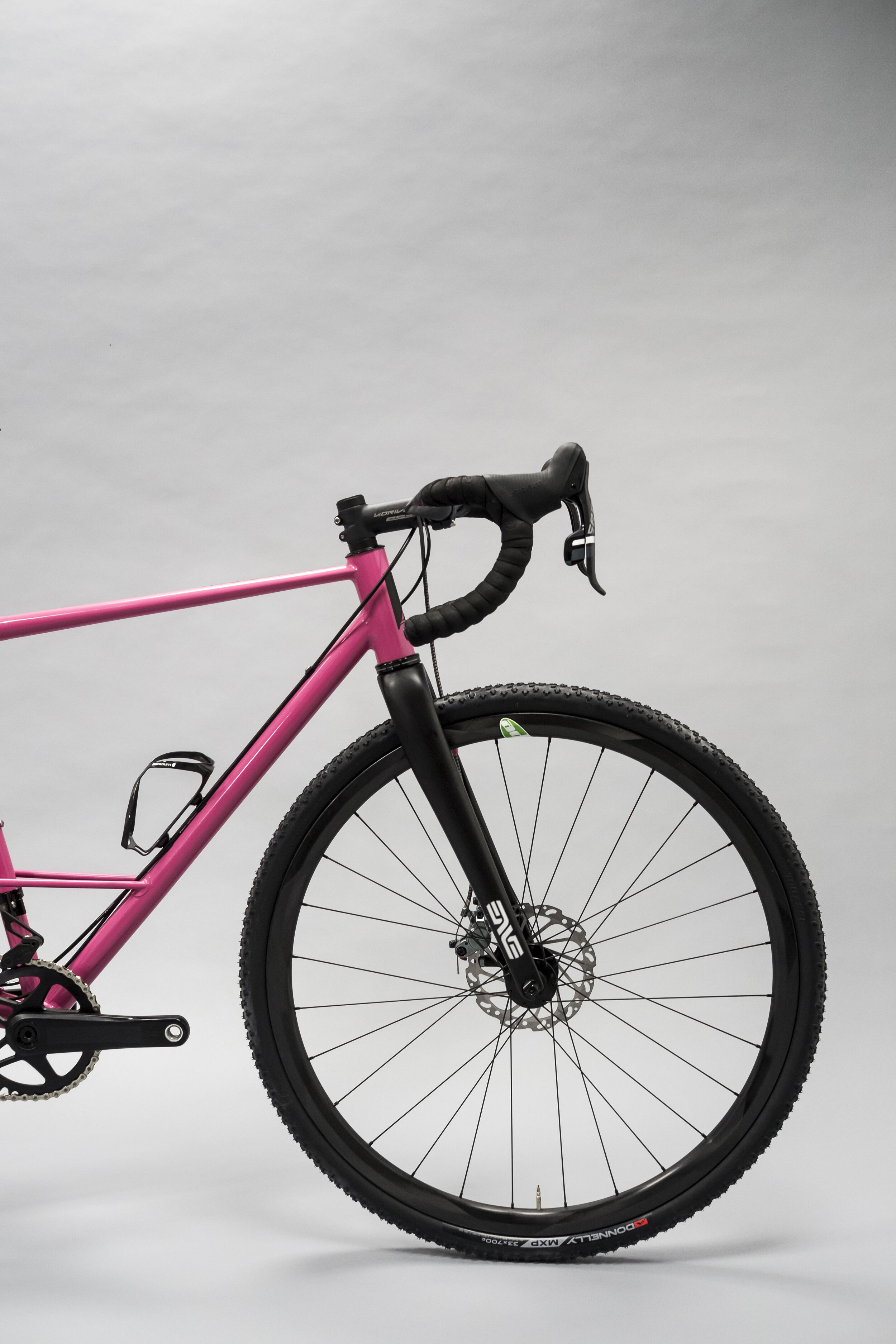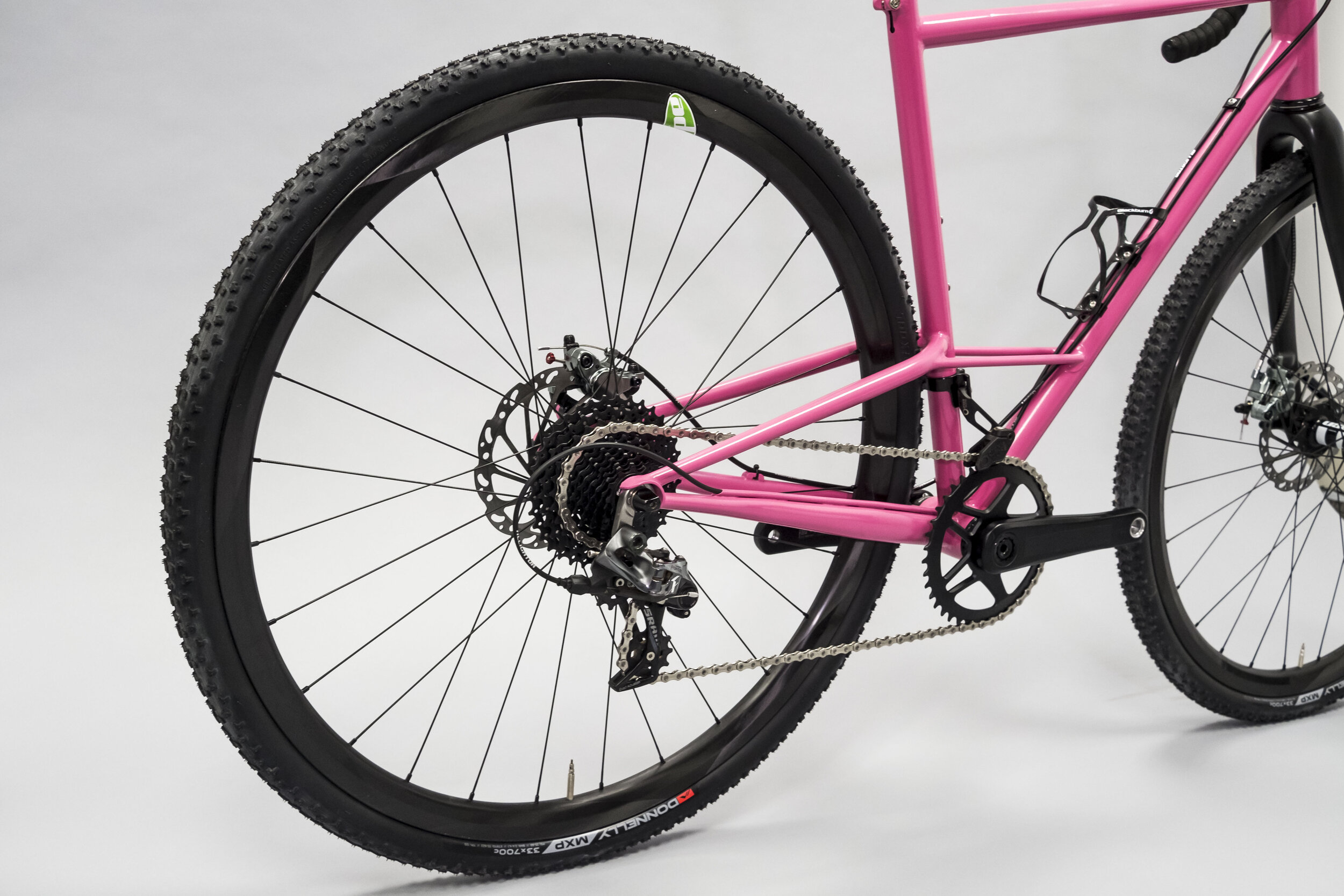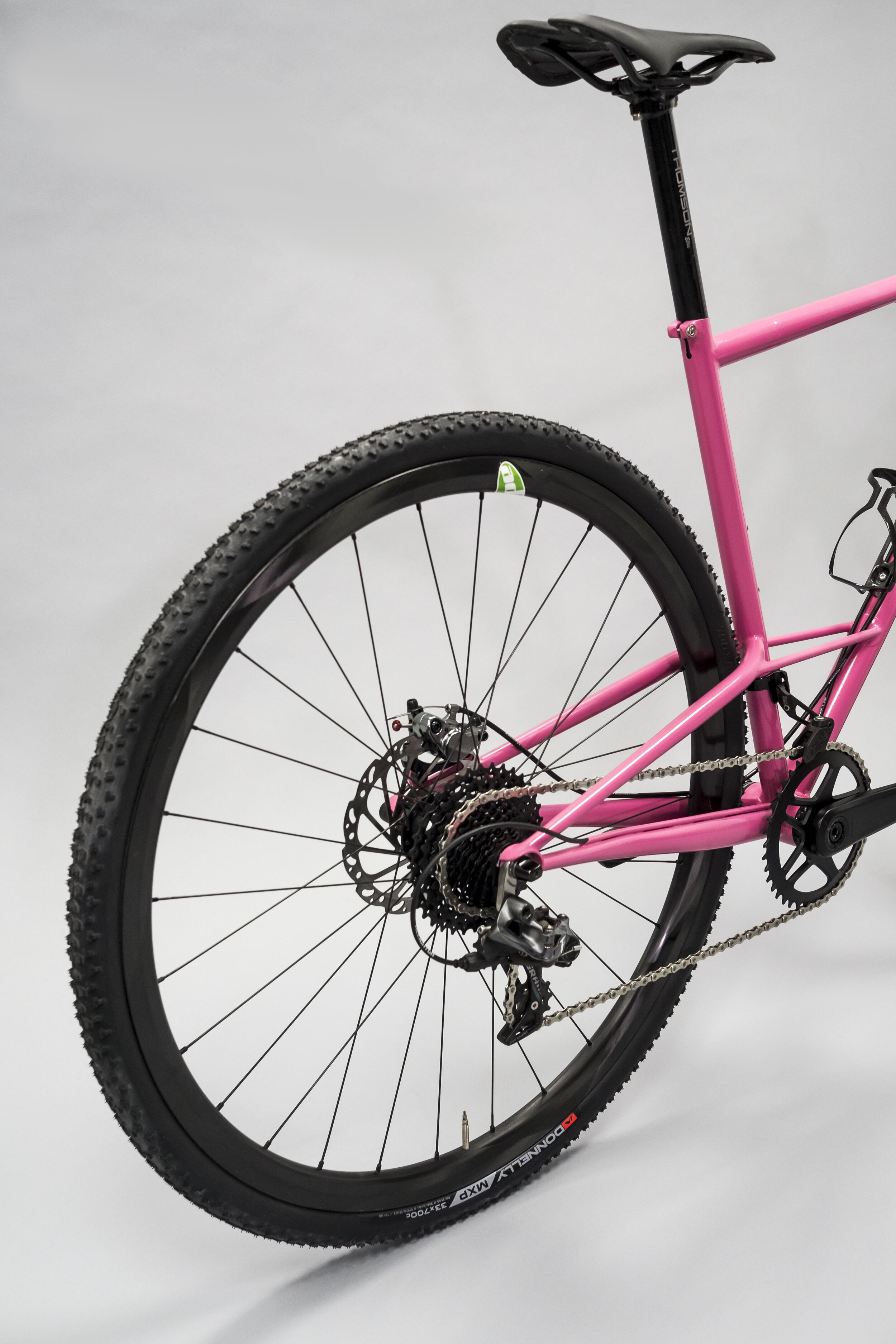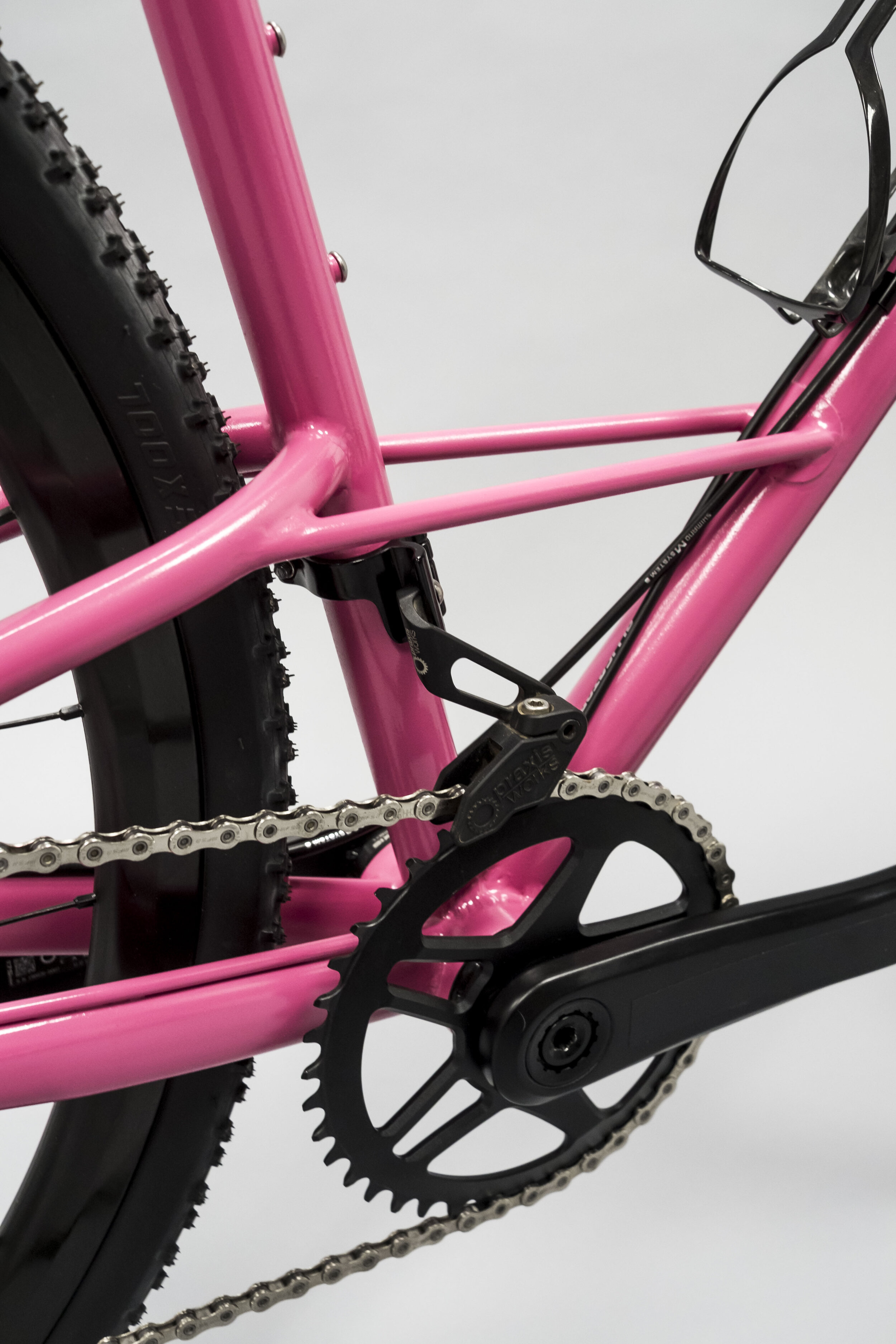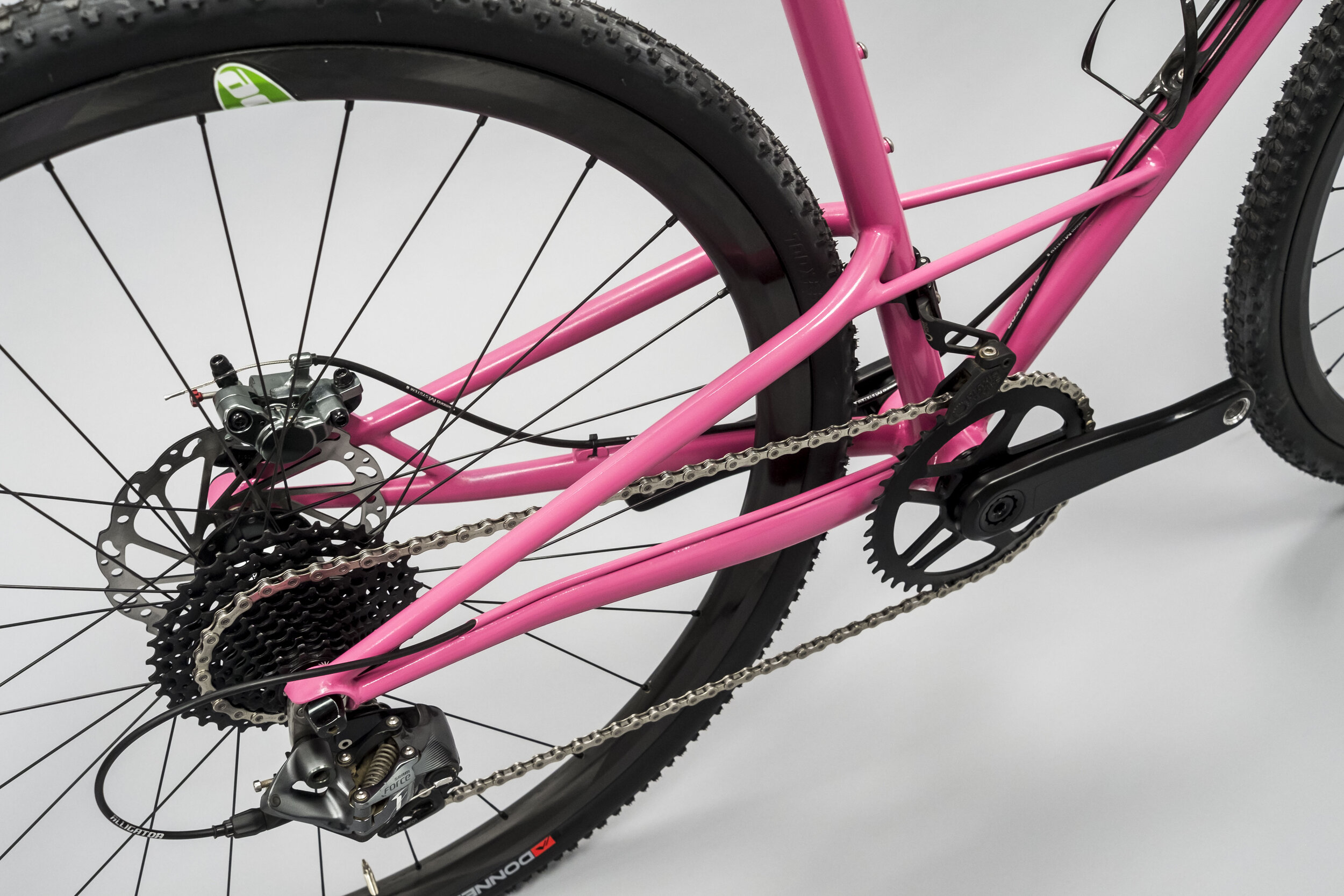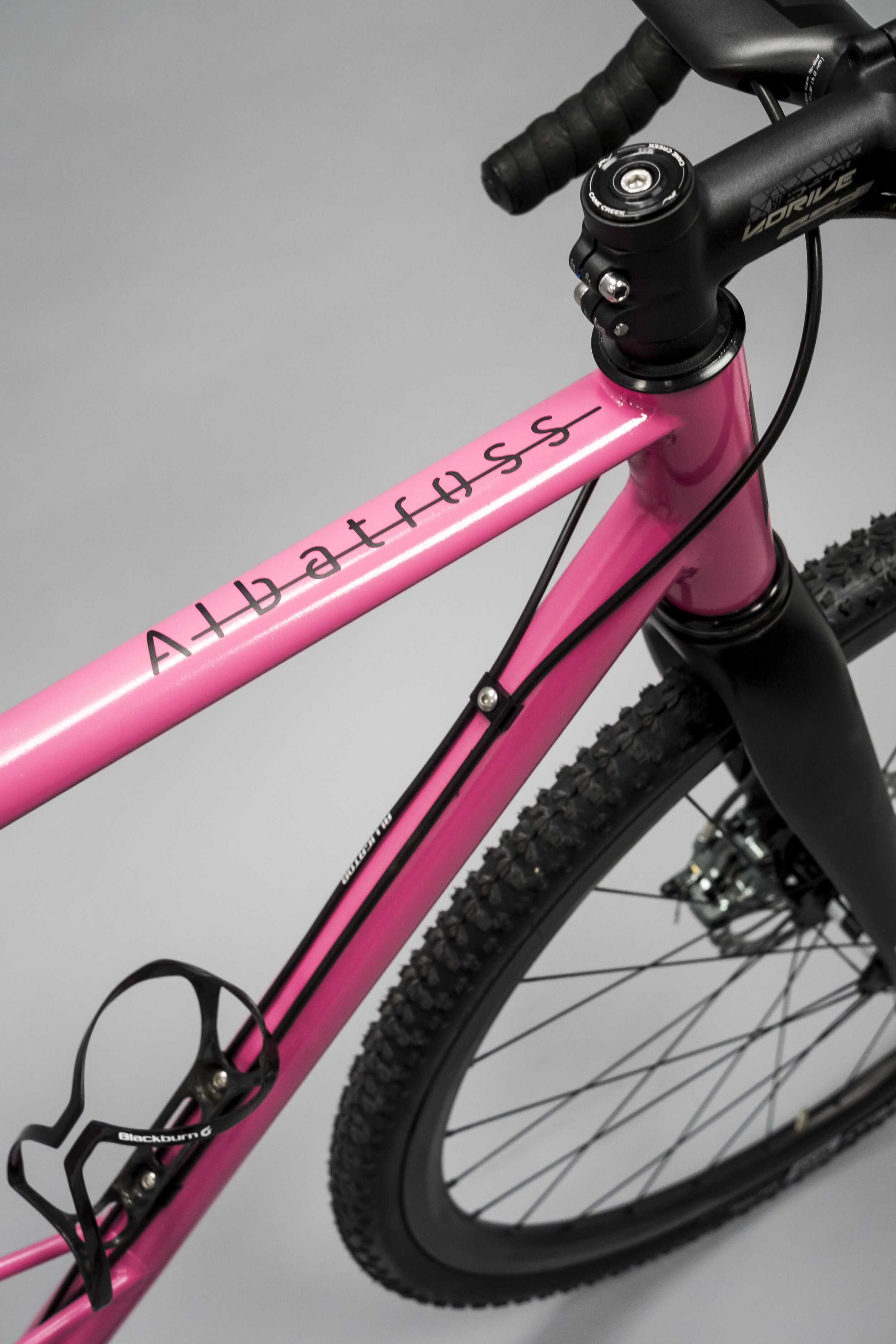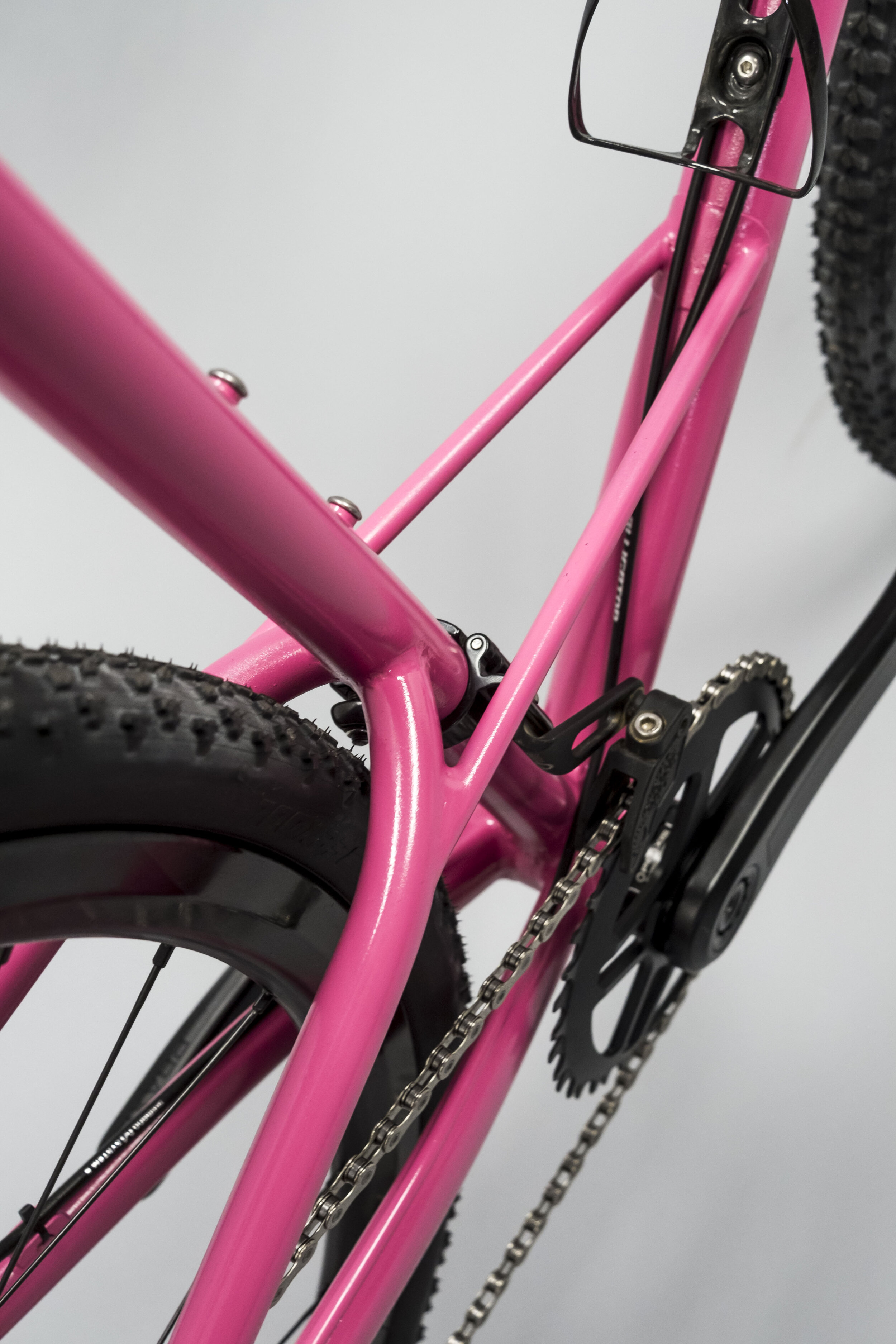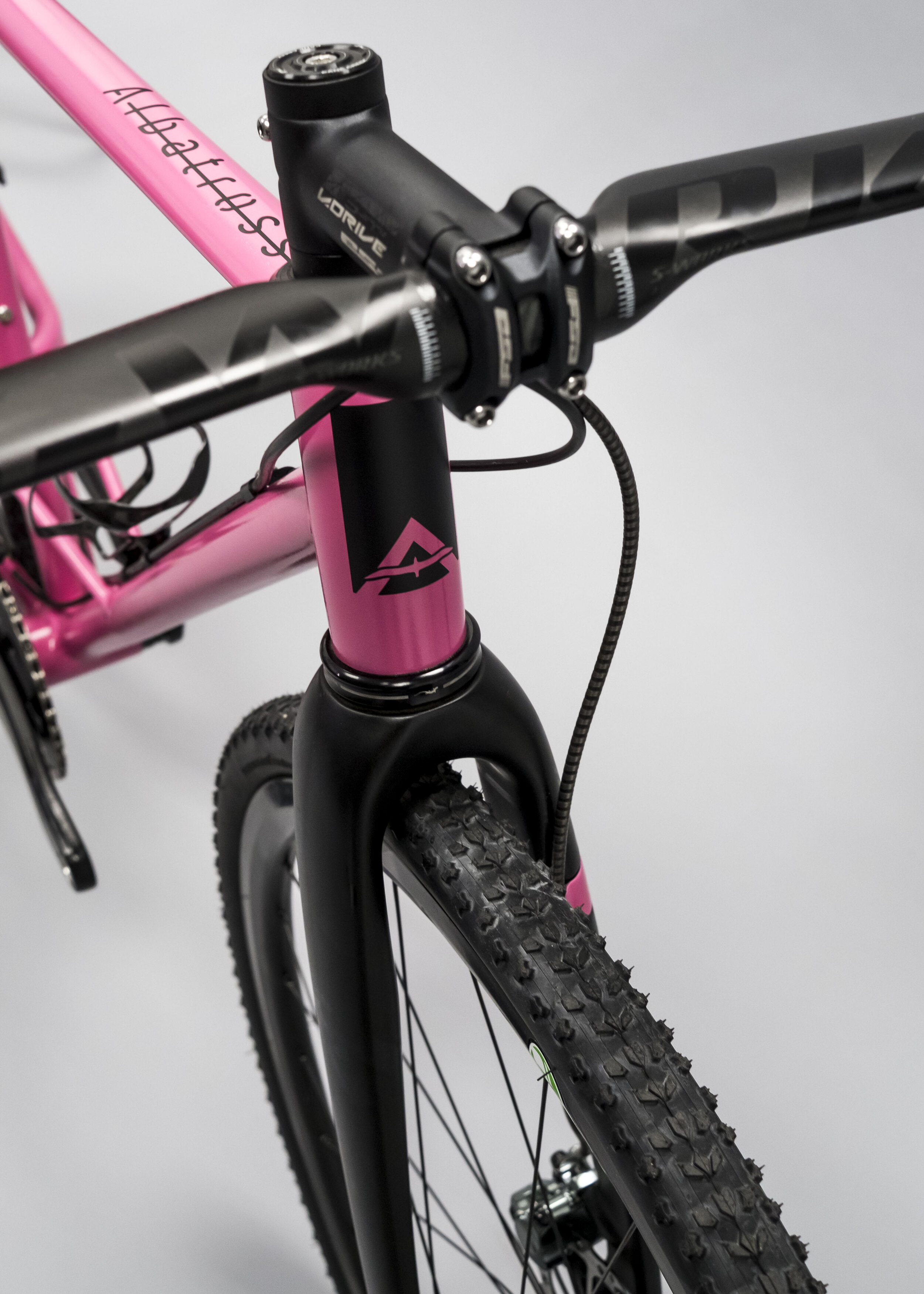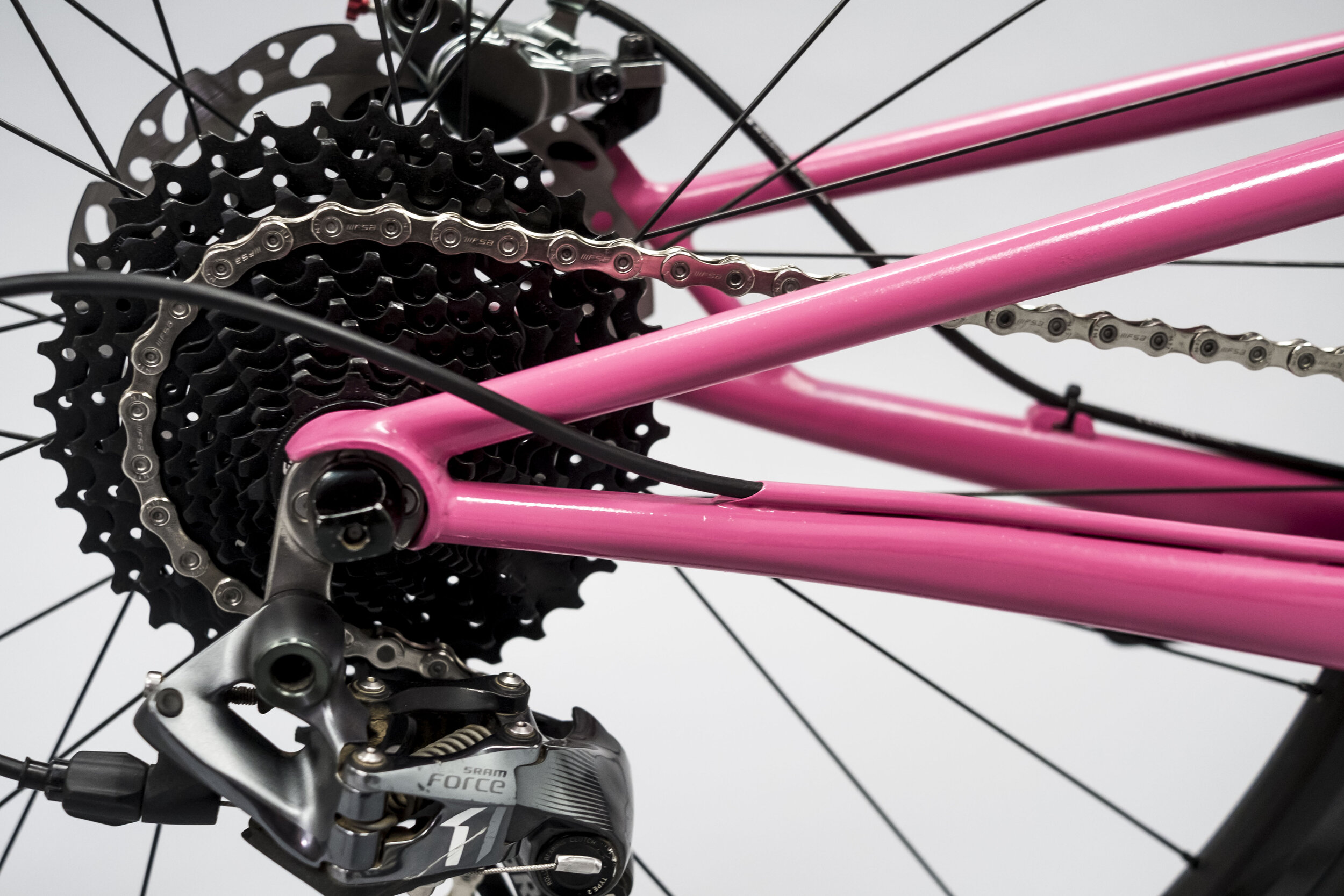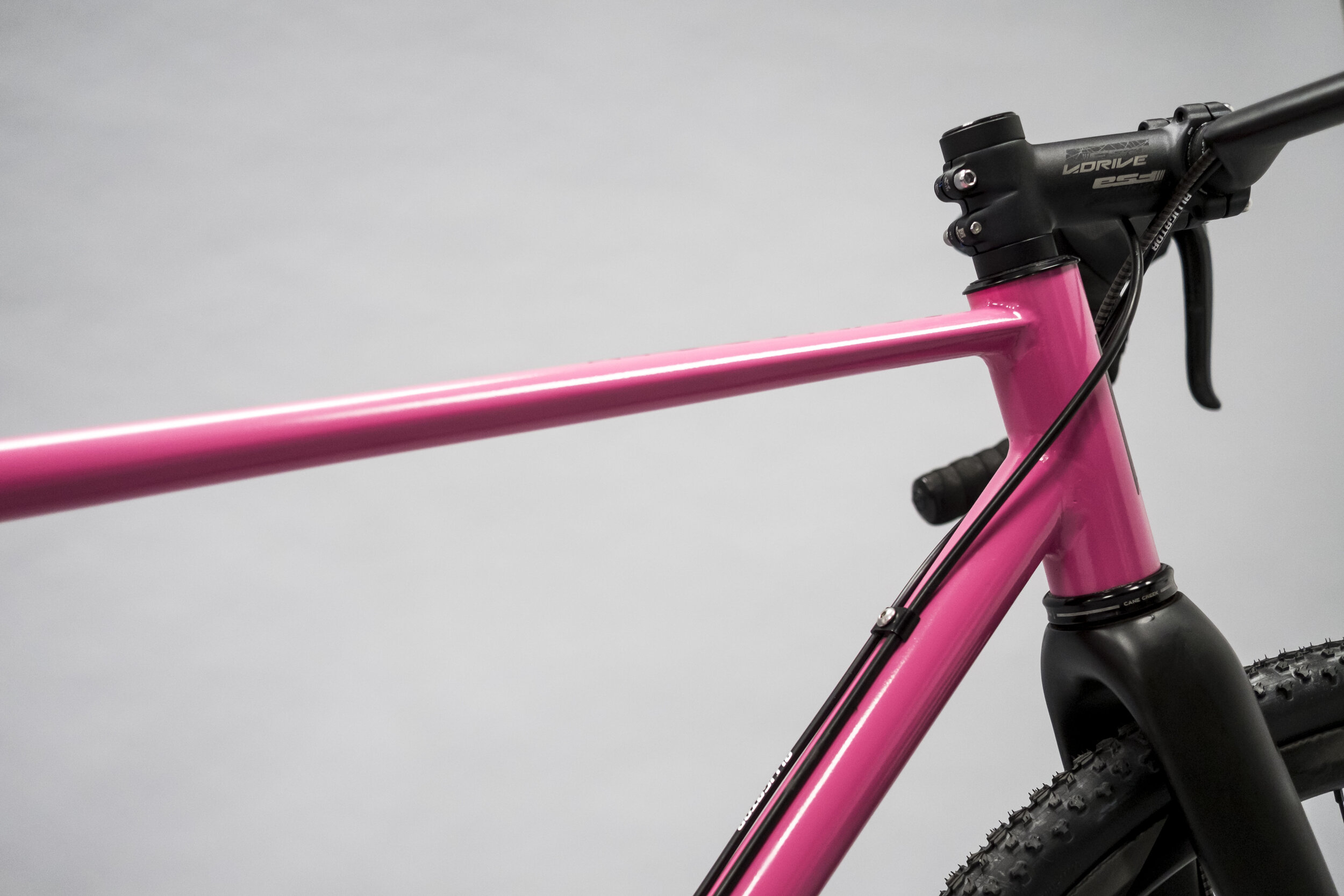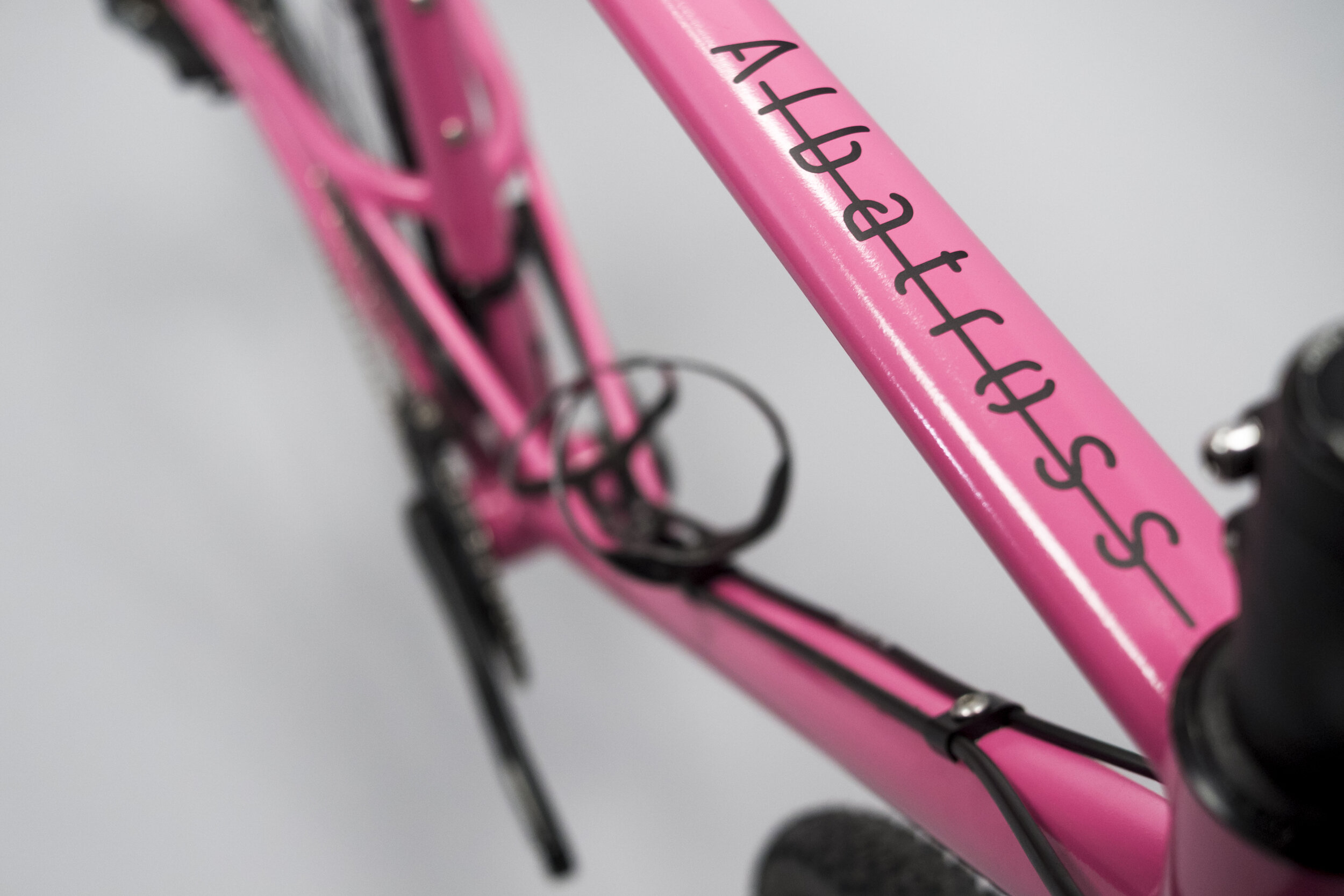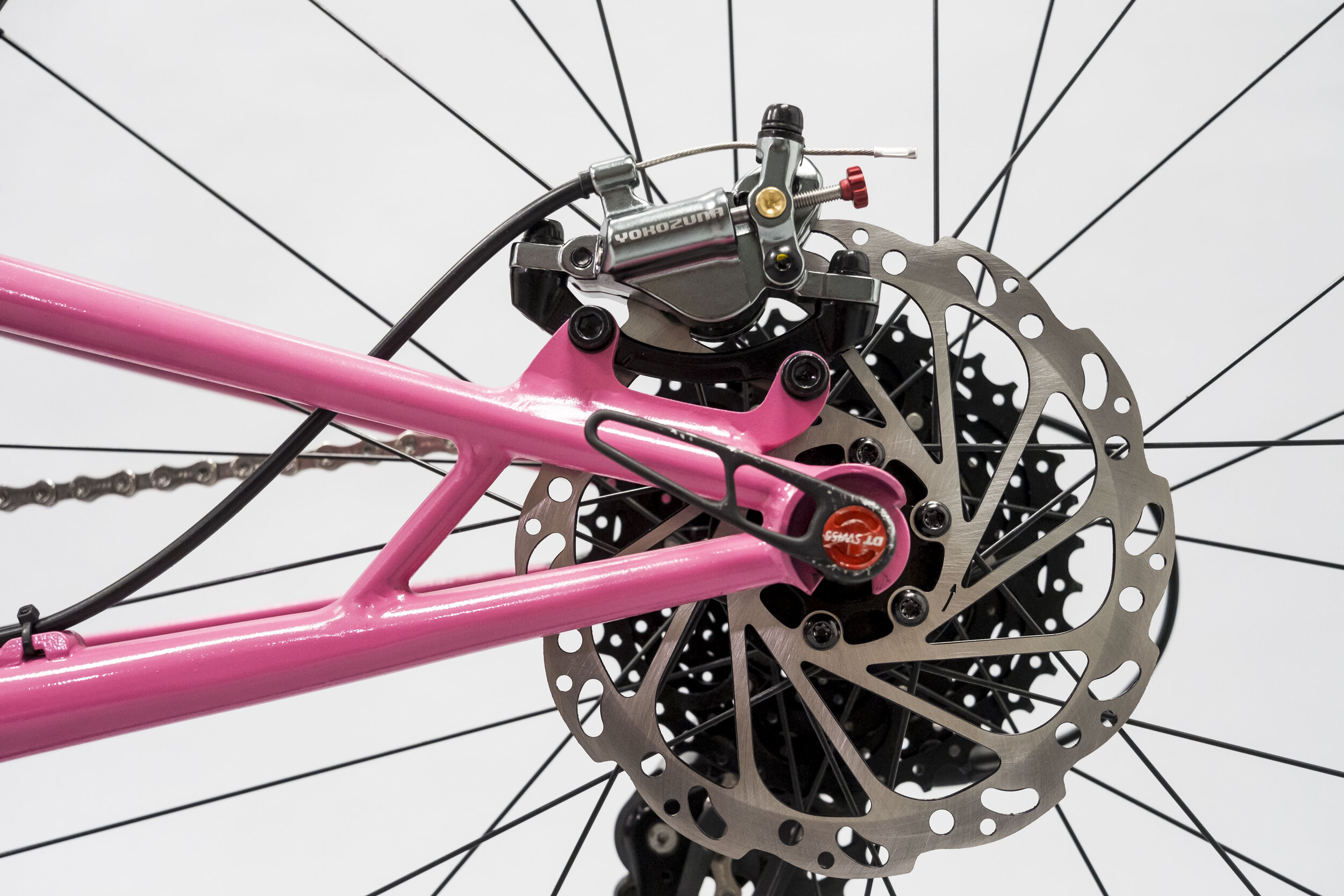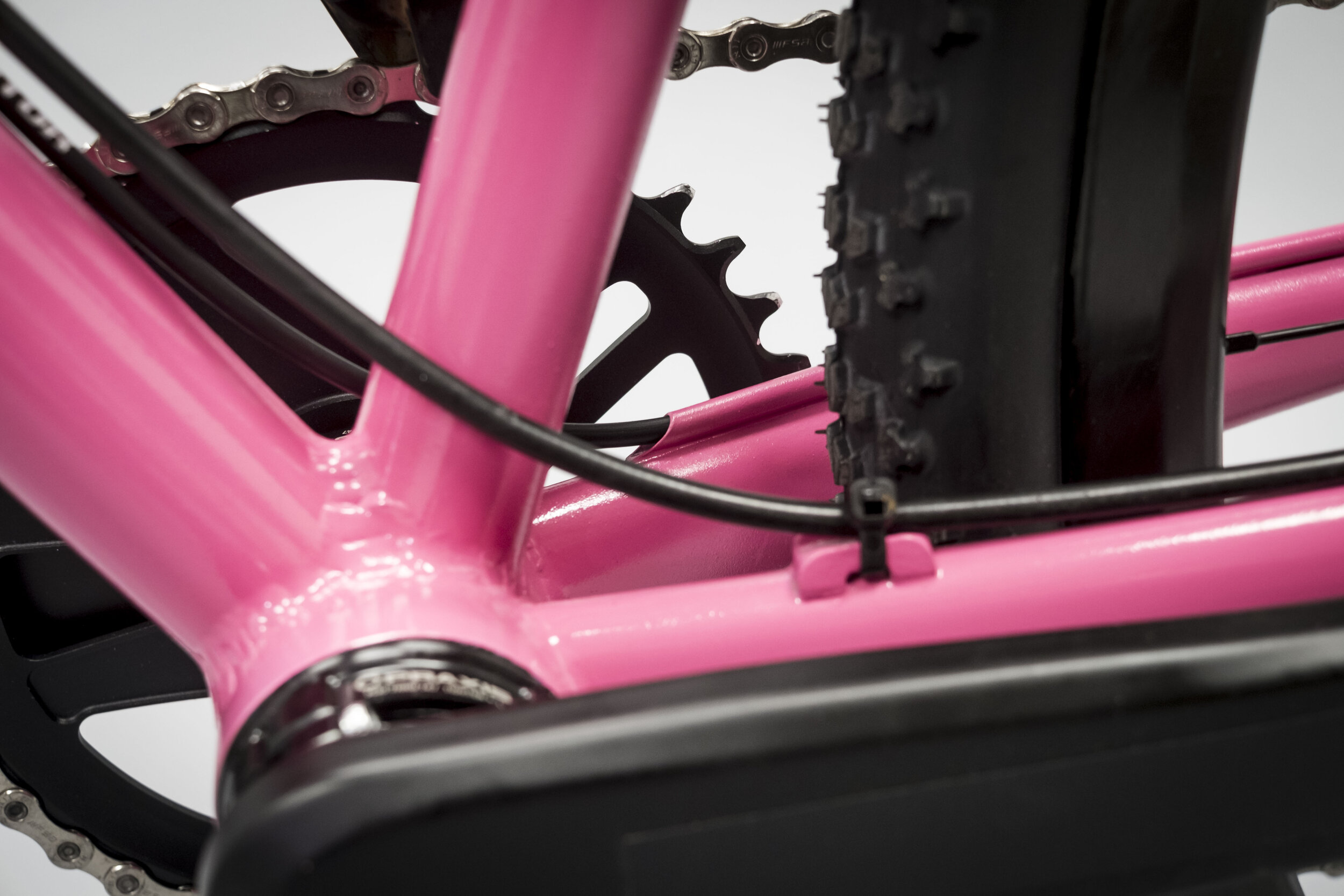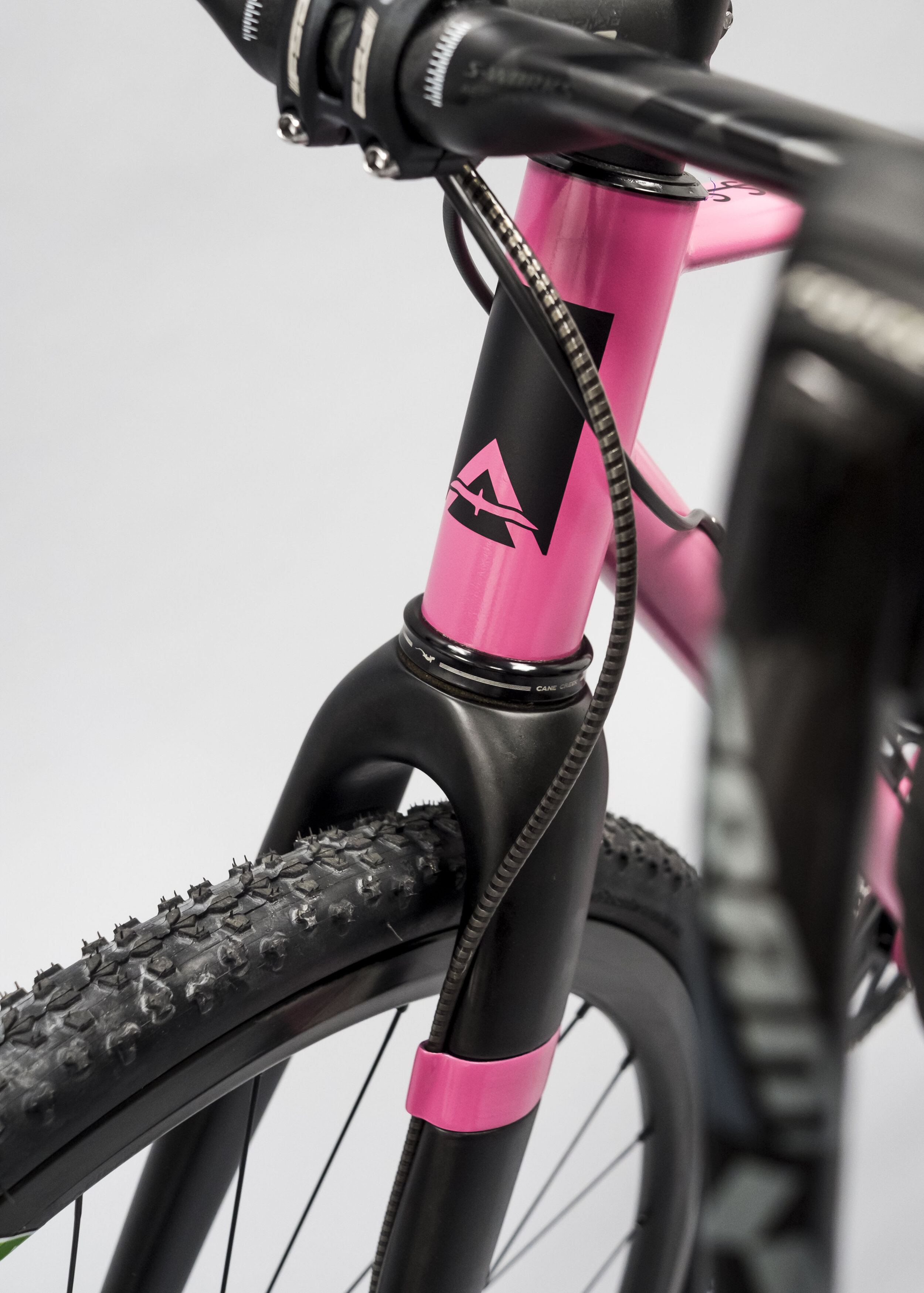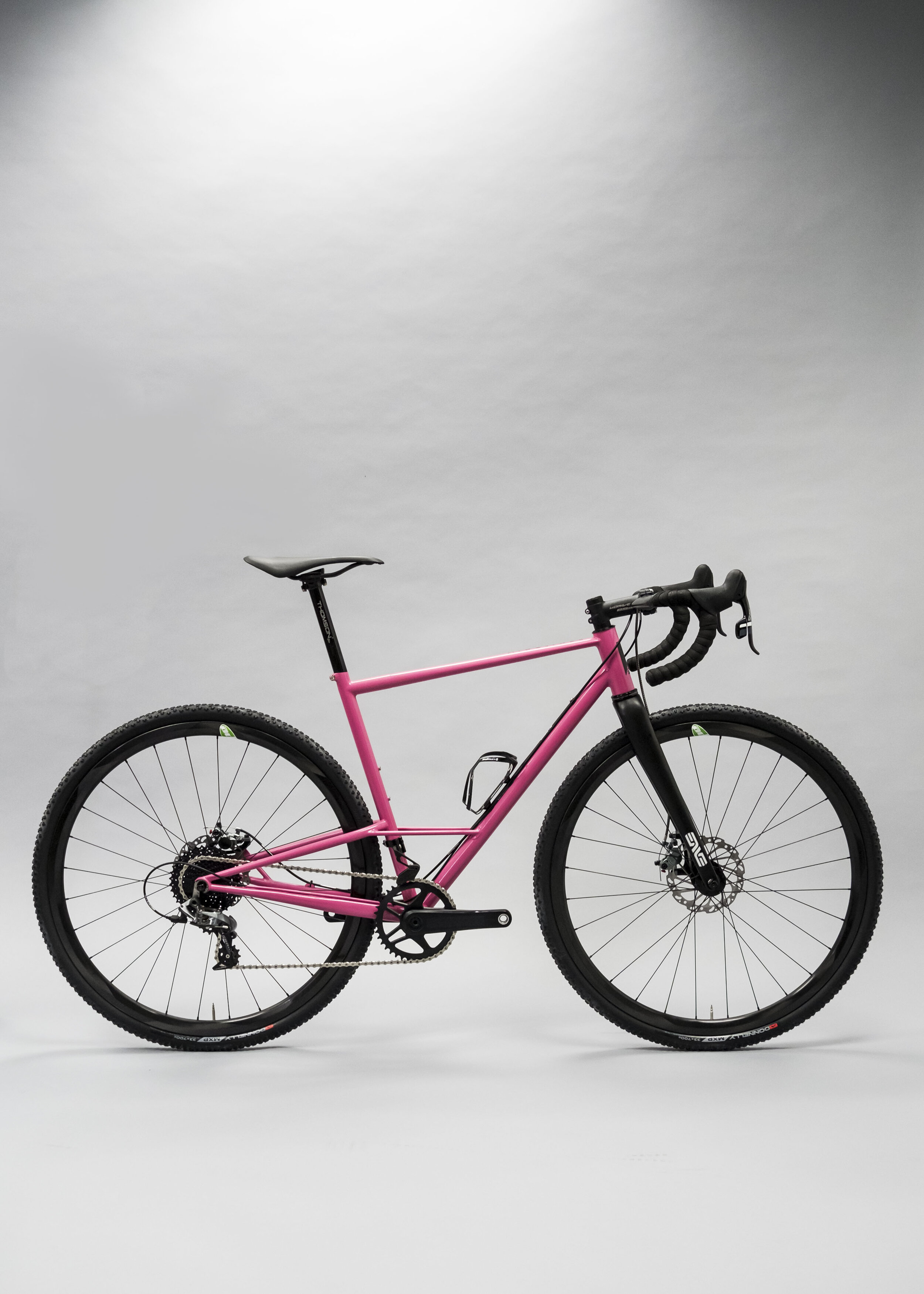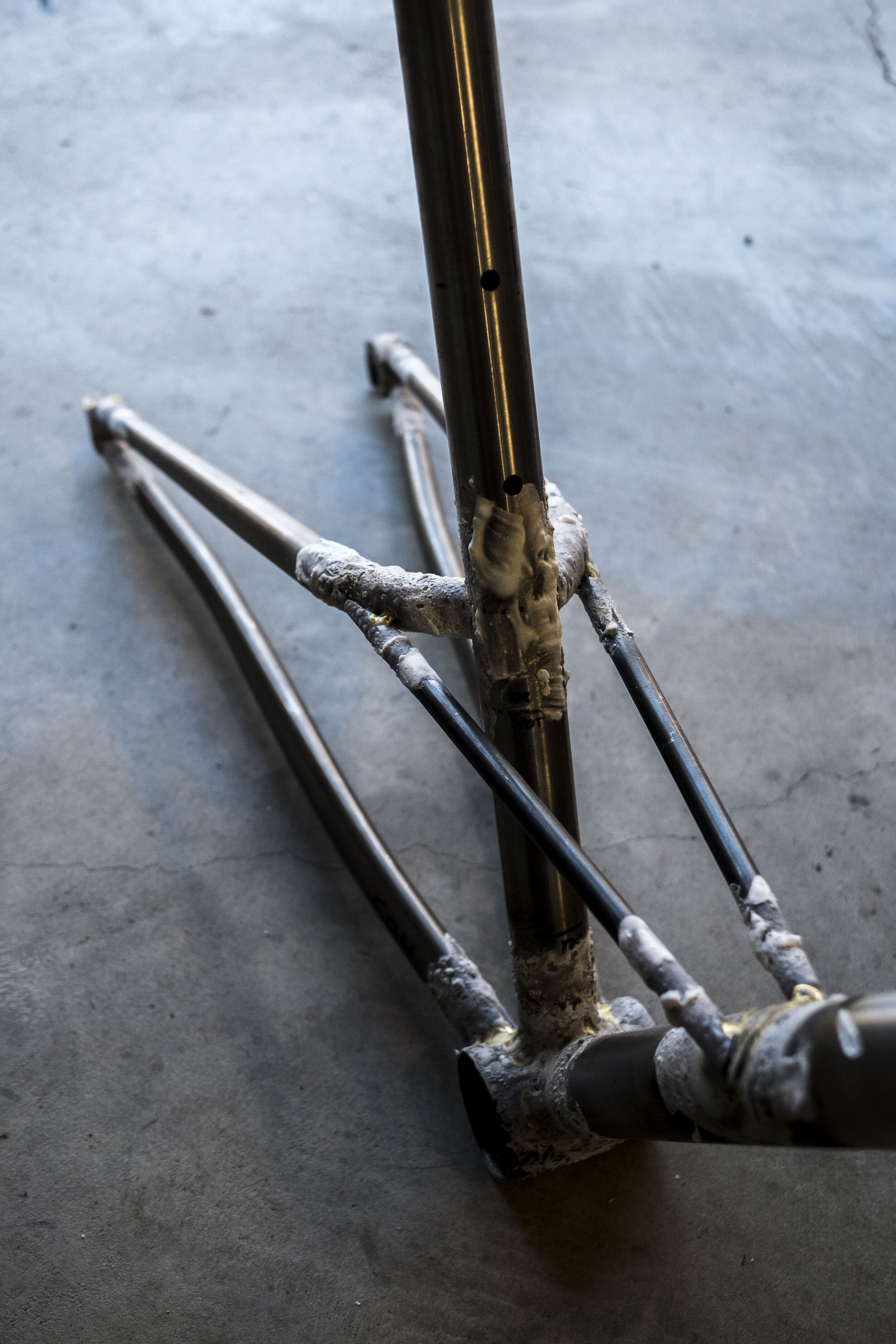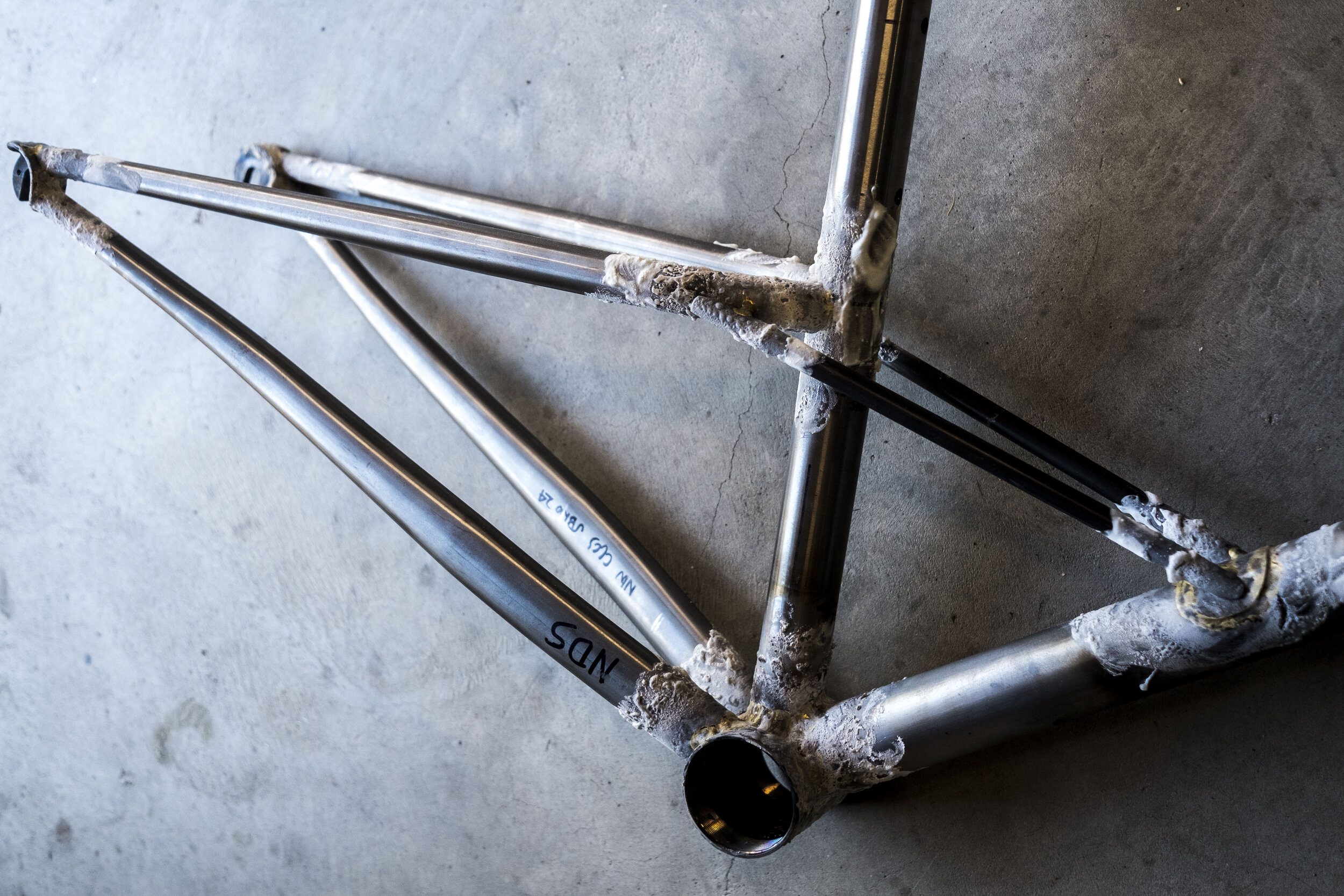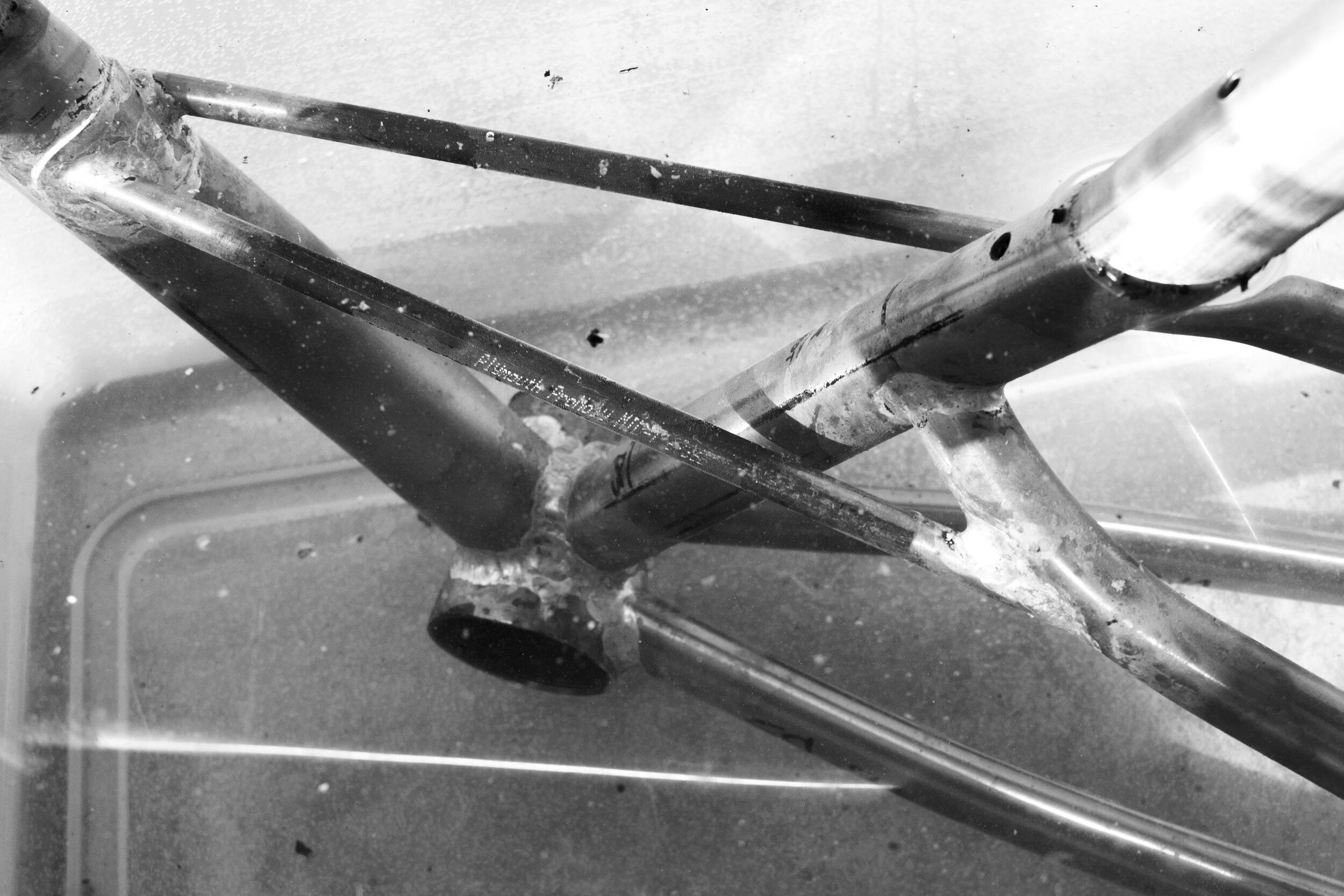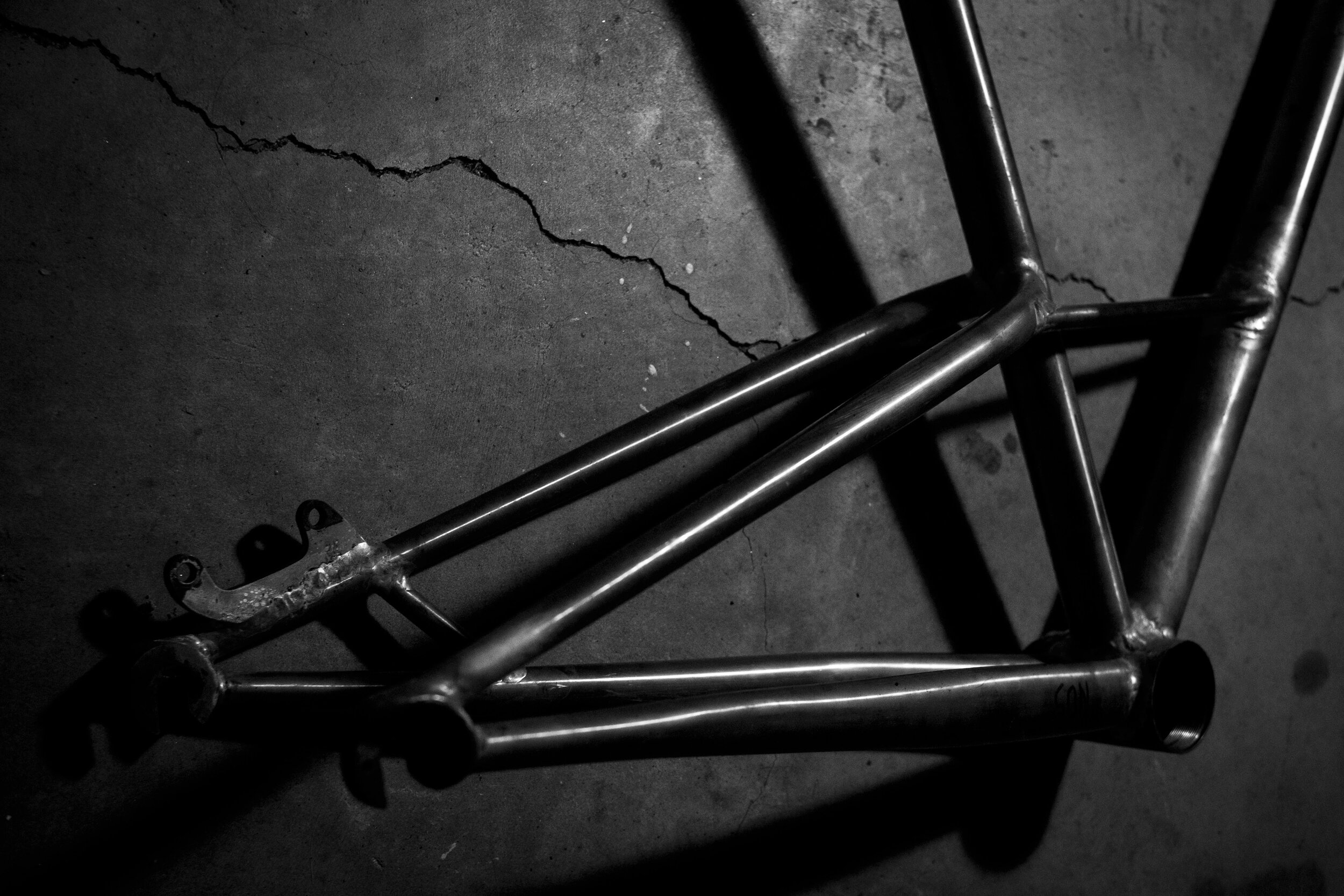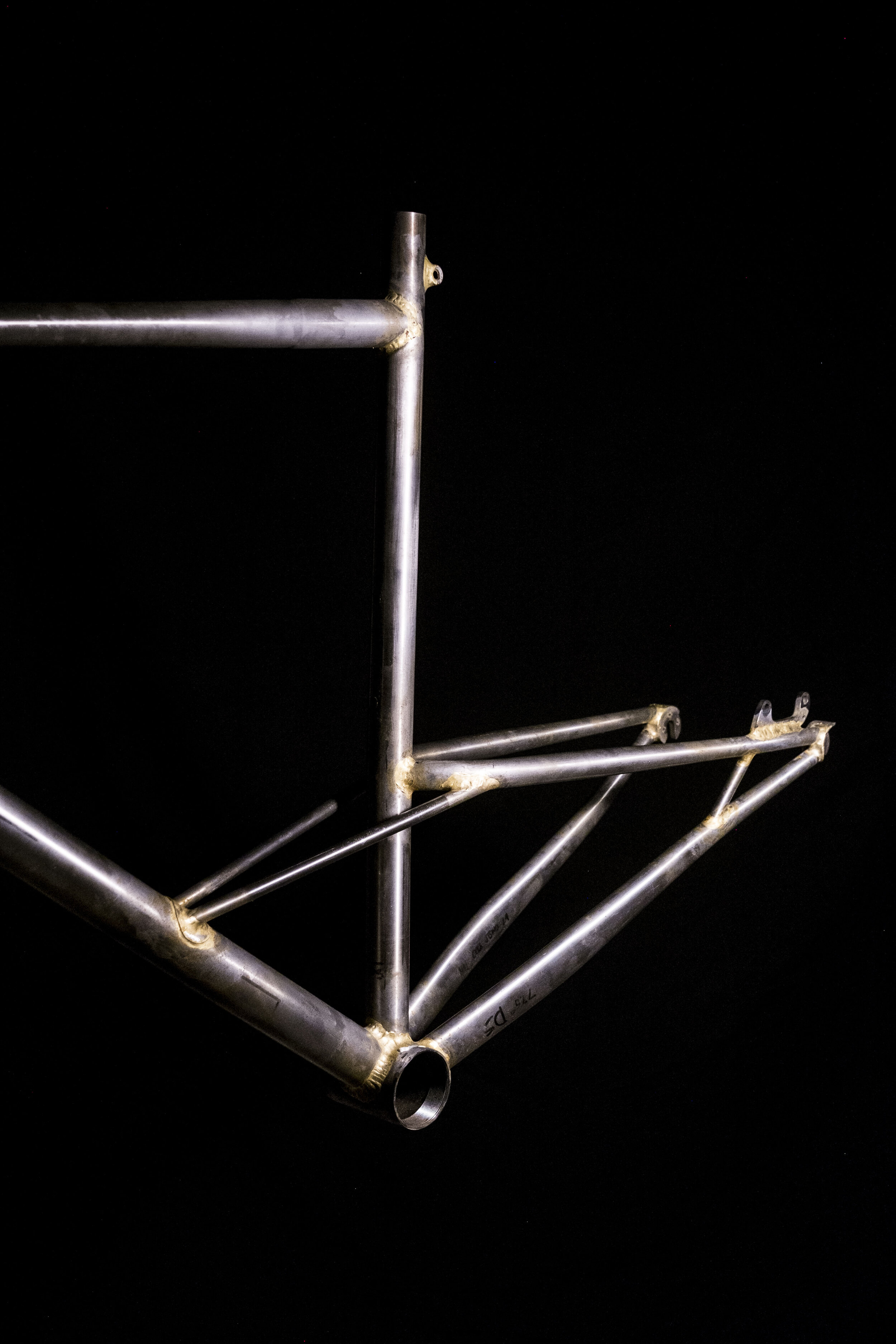CXP-01 New Frame Closeup
After testing our last DIAero P-03 prototype gravel frame for a little over half a year, we decided that for the upcoming Cyclocross (CX) season we would be better served by developing our own race-specific CX frame. By working with our CX racing friends, we were able to settle on a geometry and design that we feel will benefit the racer in any event that they should enter while also creating a bike that would be just at home outside of a competition setting.
Initial Frame Design
Starting from the geometry for the DIAero P-03, we realized that we needed a frame with less reach in the frame for a longer stem, a touch less seat to handlebar drop to increase stability and improve off-road handling, and to tweak the head angle to make the bike more eager to dive into the tight corners of a CX course. What we landed on for our fit was a reach of 385mm and a stack height of 566mm which, at 30mm taller, and 20mm shorter than the DIAero P-03 frame would fit the needs of CX racing well.
CXP-01 Frame Drawing
Additionally, by altering the head angle from 70 deg to 72 deg, we were also able to make the frame quicker steering as well. To prevent the head angle change from feeling too drastic, we also increased the BB drop by 5mm and lengthened the stem by 20mm to add in a touch more stability and slow the steering inputs. The lower BB does result in less ground clearance which will make off-camber pedaling and deep mud sections trickier to negotiate but for the courses we tend to race in California, this should not prove to be an issue.
Tacked Seatstay Reinforcement
With the basic geometry set, we then continued with the detailed structural design of the frame. At this stage, we chose incorporate our distinctive dropped chainstays into the final design. This feature was proven in the RHTP-01 to provide additional traction in the rear of the rigid frame while demonstrating notable lateral stability when pedaling out of the saddle. Increasing the traction through the aggressive stay design is of great importance to the rider when combined with the skinnier cyclocross tires as the bike will no-longer exhibit a tendency to skip and spin the rear tire when accelerating over rough, choppy terrain.For the standards chosen, we once again went with the superior (in our opinion) T47 standard shell at the 68mm width. We have already tried the internal bearing T47 standard on the DIAero P-03 frame with the 86mm width and are interested in testing the 68mm wide version for durability as well as ease of manufacture. We also chose to run the now-atypical standard QR disc spacing. This was chosen for us to be able to use our collection of older wheelsets as well as enabling faster wheel swaps on race day.
Frame Construction
As with all of our frames built to this point, we put the frame together utilizing traditional fillet brazing techniques. While this does take longer to finish the frame, we prefer the resulting finish of large fillet and smooth transitions from tube to tube.
The fillet brazing method also allowed us to add additional reinforcement to the thin section of the downtube where the seatstay bracing would join with the downtube. This bracing and reinforcement are critical to the structural integrity of the frame as we have discovered. When these tubes are not included, the force through the dropped stays is more than the long section of seat tube can handle and will cause the seat tube to bend.Choosing other frame tubes, we settled on a thin 0.8/0.5/0.8 double butted top tube and downtube being used. This combined with the tapered and butted stays would result in a final frame weight of 2kg. While this is more than we would like for a CX frame, we are also only just beginning to explore what we can do to reduce the overall weight of the frame through tube choice and refinement of the design. We are quite certain that a sub 2kg frame using the unique seatstay configuration is possible.
CXP-01 Brazed Frame
Following the brazing of the frame, the fillets were then sanded smooth to provide a nice finish under the final layer of paint.
Finish Work and Final Build
The frame was then finished with a coat of gloss pink paint. As this is a prototype, we only used a spray can finish to save cost while still protecting the tubes from oxidization. Should we later decide to use this frame for longer than a single season, we will be able to easily sandblast the frame and switch to a more durable powdercoat.
The frame was then finished with a build kit from a build kit supplied from an earlier CX frame. This included carbon rims (19mm inner width) laced to a DT Swiss DT350 hubset and with Donnelly 33mm MXP tires and an 11-36T Sunrace Cassette. SRAM Force CX1 derailleur and levers, debadged Praxis crank with 42T chainring, and an FSA/Specialized cockpit would round out the parts bin build of our CXP-01 Prototype frame.
Cable-actuated hydraulic disc brakes from Yokozuma were a late addition to the build to replace a worn-out set of Avid BB7 mechanical disc brakes. We have found that over time, the BB7 brakes tend to lose their bite so we hope that running the bleed-less, cable-actuated hydraulic Yokozuna Motoko brakes will provide for a more positive and powerful brake feel.
After these photos were taken, we were able to sneak out for a bit of a shakedown ride and even though there are still a few aspects of the fit that need to be tweaked for optimal comfort, the overall feel of the bike is as we had hoped it would be. The supple rear triangle provided a lot of traction over the hardpacked surface of our local lunch loop and still accelerated with gusto when provided with some motivation. We will need to spend more time and a few races on the frame to properly evaluate whether or not the bike will be able to achieve all of our design goals.
Until next time: Ride Fast, Ride Far.



